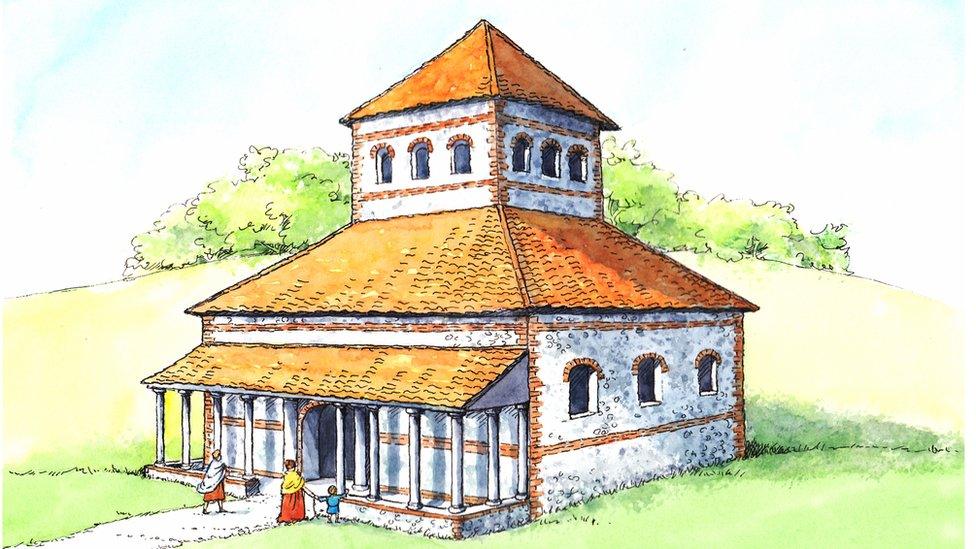Roman Caistor: Dig reveals 'what the Iceni did next'
- Published
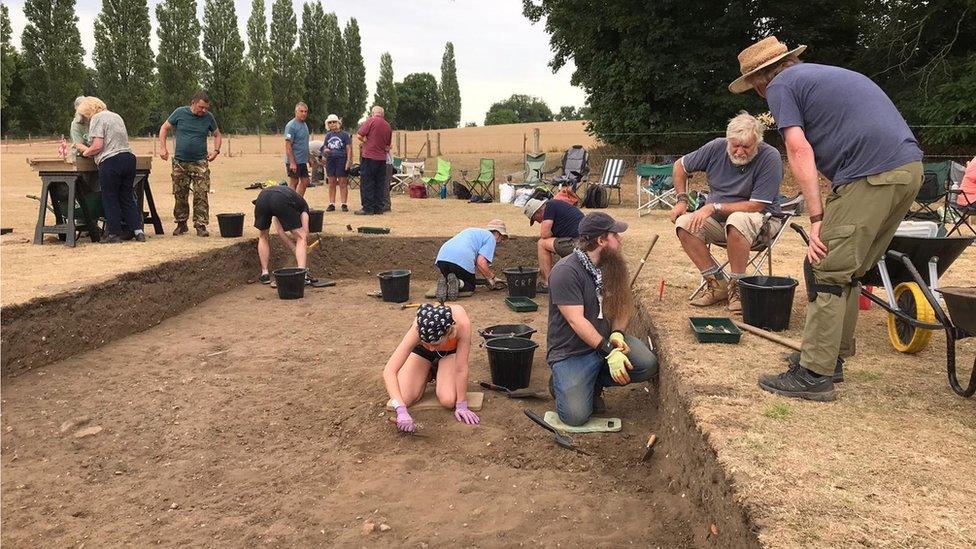
The Caistor community archaeology group has been at the site for two weeks working in partnership with Nottingham University
Land next to a Roman temple was a busy cult pilgrimage site, where people buried objects in "bargains with the gods", a dig has found.
The site is beside "one of the largest" temple buildings in Roman Britain at Caistor St Edmund, near Norwich.
It was built by the Iceni, best known for their leader Boudicca, who rebelled against the Romans in AD61.
Archaeologist Prof Will Bowden said: "This is the tribe after Boudicca - what the Iceni did next really."
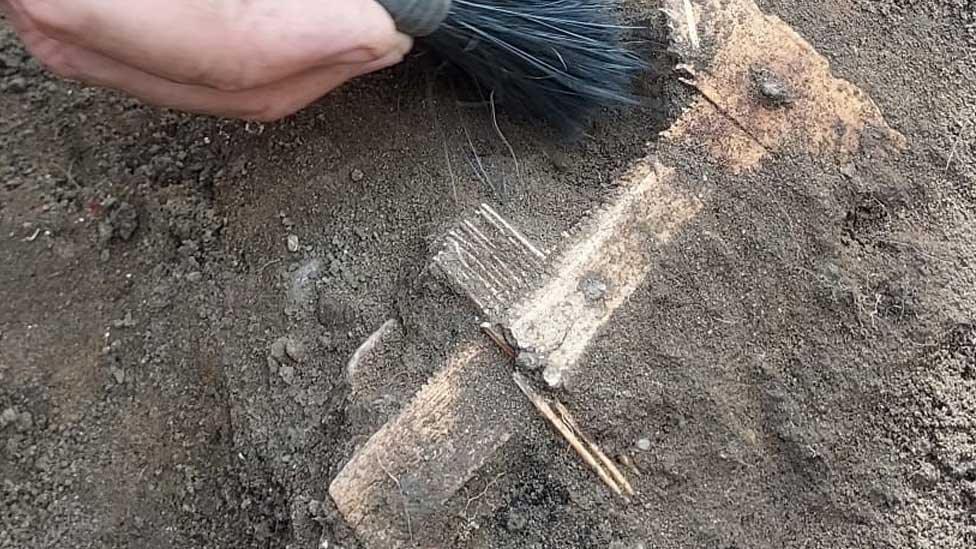
This Roman bone comb was among many objects found during the two-week dig
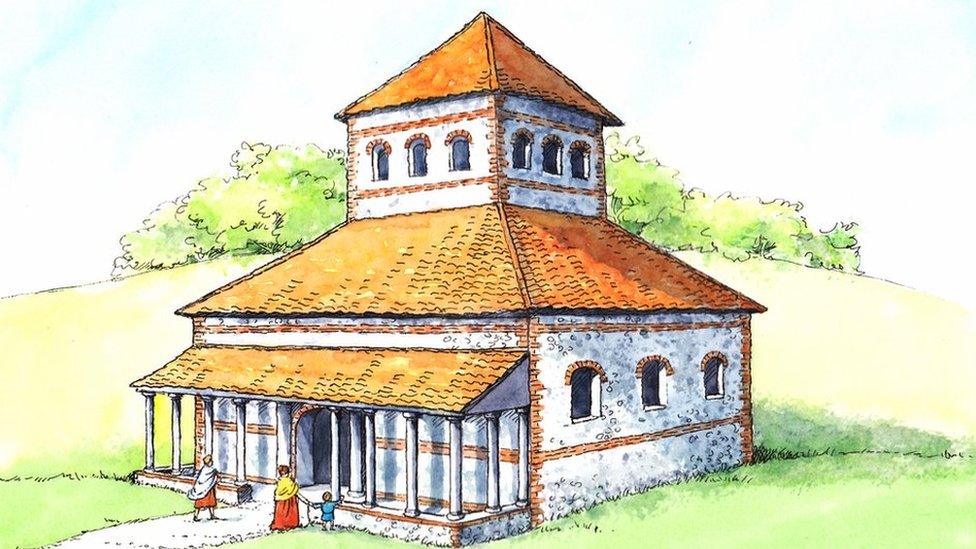
Caistor's temple would have been a "major landmark in the region", said archaeologist Prof Bowden
The community archaeology group Caistor Roman Projec, externalt spent two weeks at the 50m x 20m (164ft x 65ft) site, working in partnership with the University of Nottingham.
Complete pottery vessels, household grindstones made from imported lava, bone and bronze pins and dismembered animal bones have been uncovered, all deliberately deposited in the ground.
Project director Prof Bowden said the area "would have been like any other pilgrimage site".

Other finds include pottery vessels...
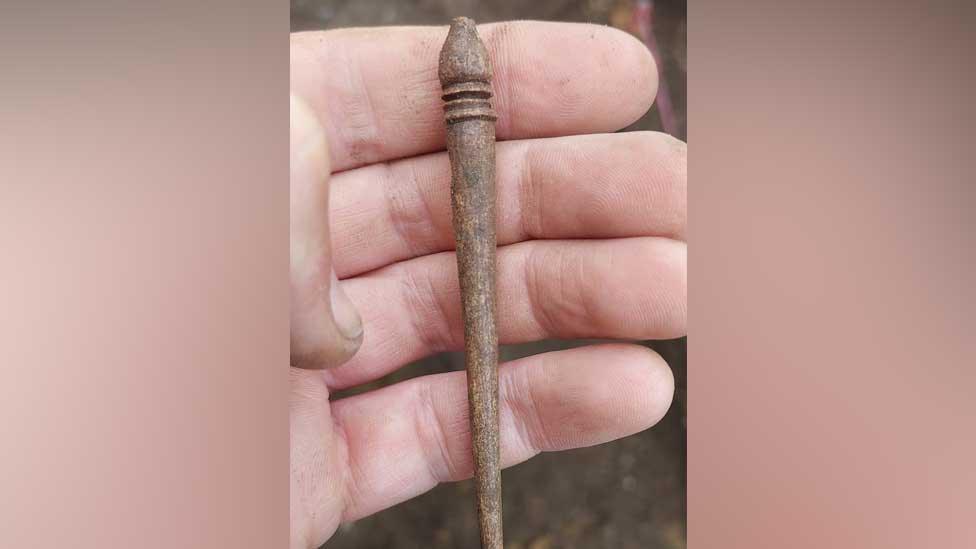
...and a bone pin, fresh from the ground
"There's stuff happening at the temple itself and all around people are selling you things, including votives to deposit to give to the gods and goddesses," he said.
"We have a sense that medical activity was going on too - we've found a couple of medical probes and judging from the size of them, pretty uncomfortable."
The temple has been known about since 1957, with investigations undertaken since then, external, and last year "the bottom of a Venus" figurine was found, recognisable from complete examples of the statuette which was "made in huge quantities in Gaul".
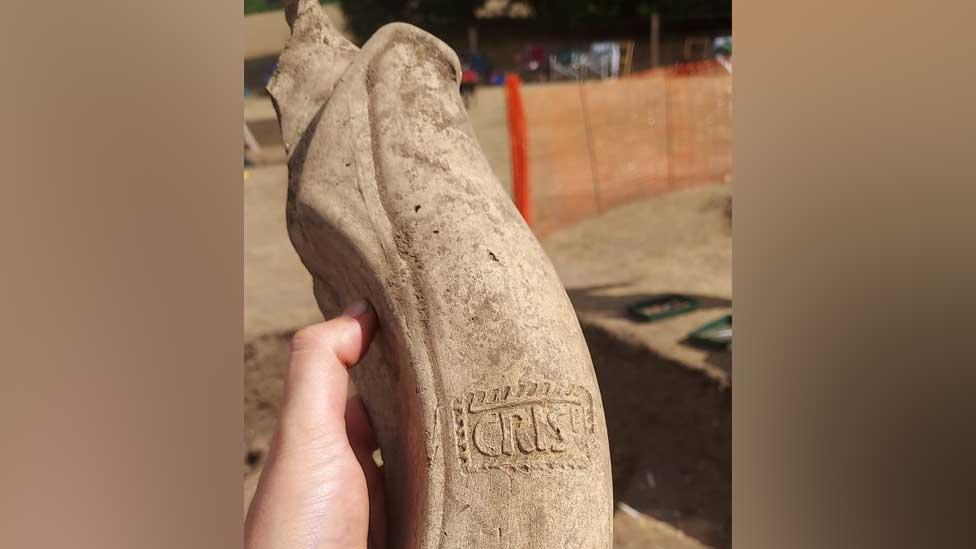
This part of a locally-made Roman mortarium or mixing bowl shows the maker's stamp (reading Crispus)...

.. and this ceramic bowl shows a face from the past in the form of a relief decoration
But the "big story" of the latest finds is that the Roman town and temple were established at a site of local religious significance, according to the professor.
"We tend to think the Iceni disappear from history after the Boudiccan revolt but they are absolutely still here in Norfolk and using the new things they are getting from the Roman world, either in Roman ways or in ways to suit them," he said.
This included depositing objects in the ground, "carrying out ritual activity in a way that suits their own beliefs and aspirations" to curry favour with the gods.
"Worship involved bargain with the gods - you do something for me, I do something for you," he said.
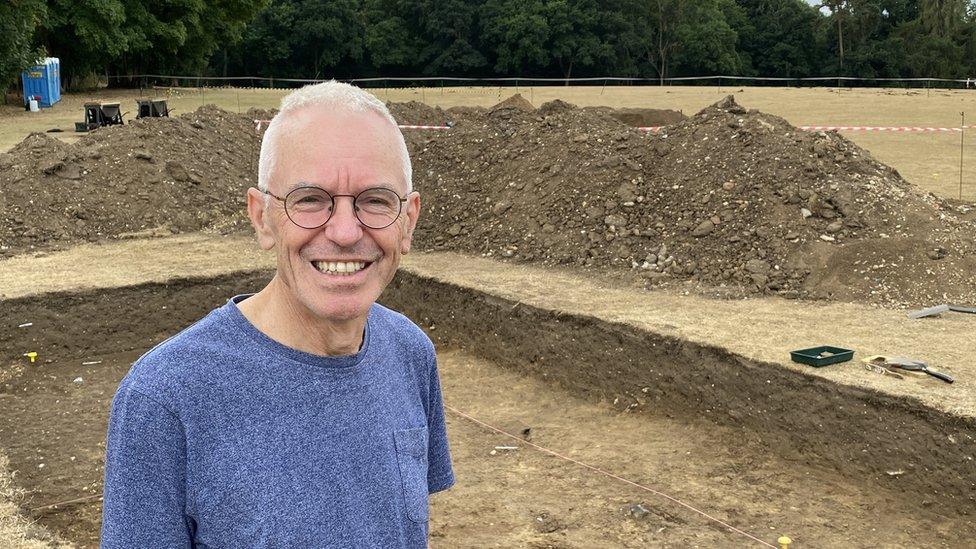
The finds were made in four trenches and Prof Will Bowden believes they are "only on the edge" of more discoveries

Find BBC News: East of England on Facebook, external, Instagram, external and Twitter, external. If you have a story suggestion email eastofenglandnews@bbc.co.uk, external
Related topics
- Published17 August 2022
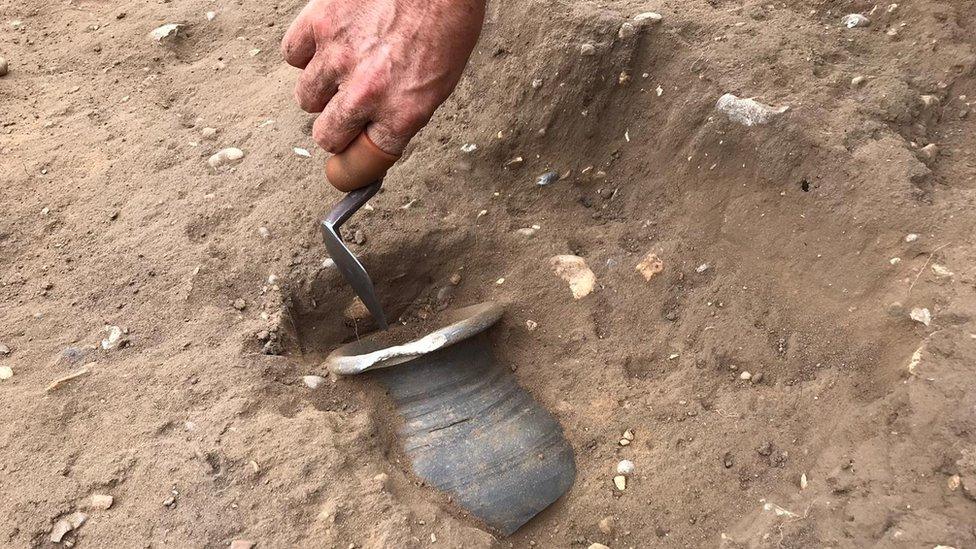
- Published1 July 2022
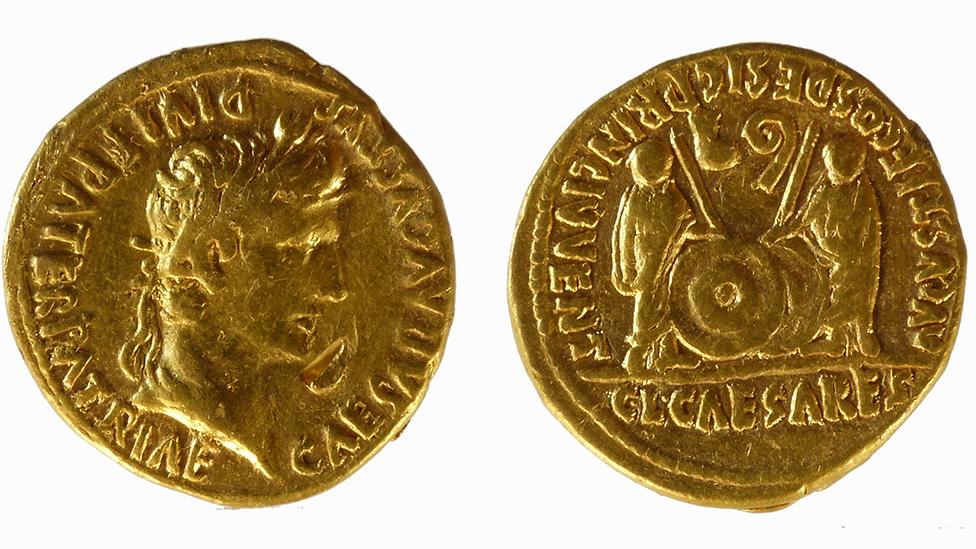
- Published8 August 2021
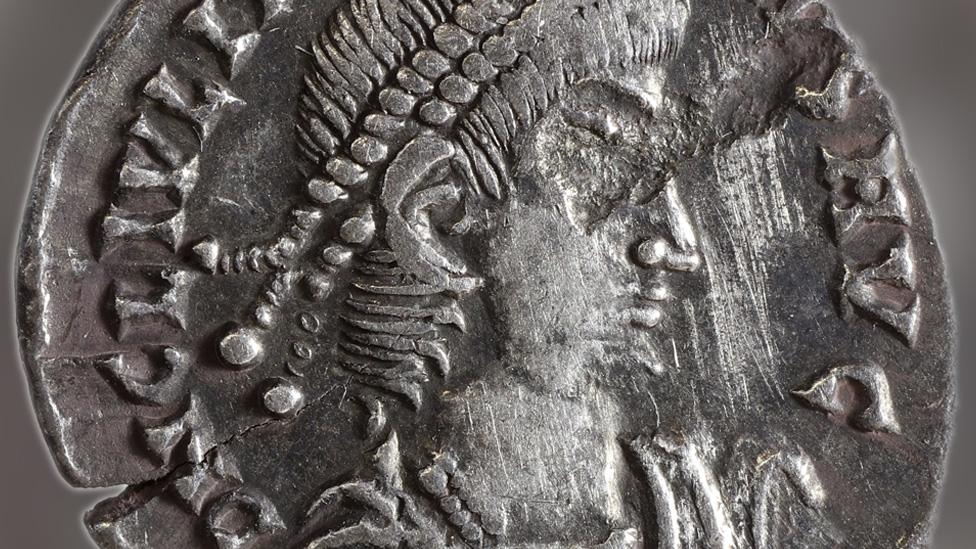
- Published23 July 2021
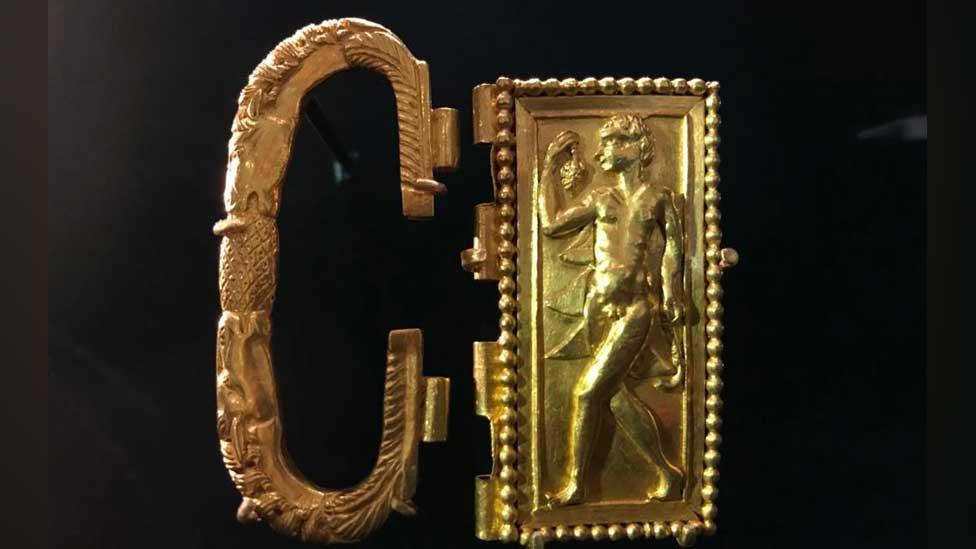
- Published7 December 2020
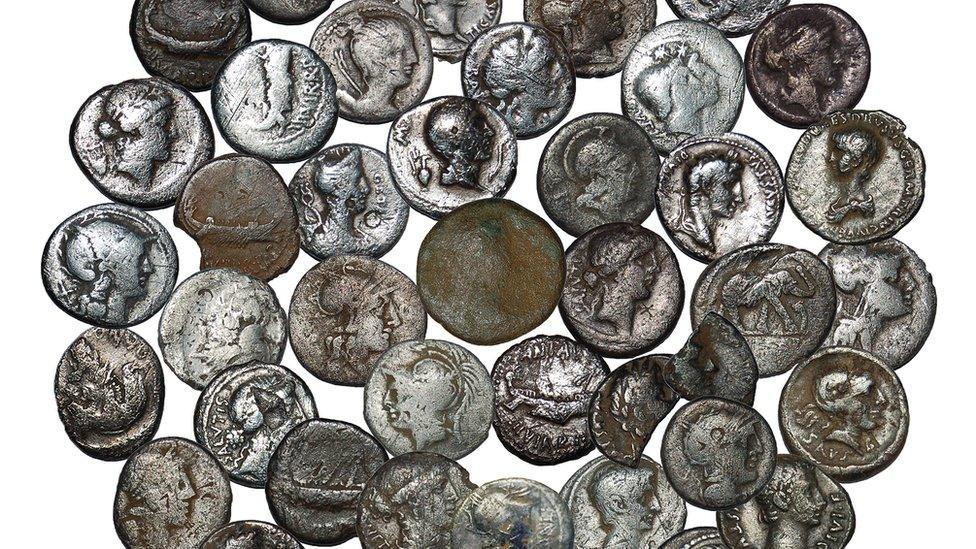
- Published13 September 2020
